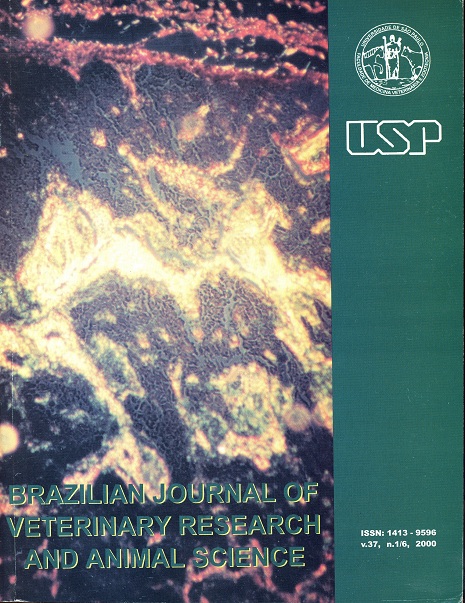Antimicrobial activity of Tagetes minuta L. - Compositae (Chinchilho) against Gram-positive and Gram-negative bacteria
DOI:
https://doi.org/10.1590/S1413-95962000000600001Keywords:
Disinfectants, Antiseptics, Activity, Antiinfective agents, Tagetes minutaAbstract
The decoct of Tagetes minuta L. - Compositae (Chinchilho) was submitted to serial dilutions in vitro for testing with the multiple tubes technique its antimicrobial activities - expressed by Minimum Inhibitory Concentration (MIC) and Minimum Bactericide Concentration (MBC)-, to different concentrations of Gram-positive (Staphylococcus aureus, Enterococcus faecium) and Gram-negative (Salmonella Gallinarum, Escherichia coli) bacteria inocula. The statistical analysis showed, for part of decoct concentration / bacterial dilution combinations, that Staphylococcus, Enterococcus and Salmonella had major antimicrobial sensibility to decoct, demonstrating selective action. Escherichia revealed resistance to antimicrobial activities of the decoct, also under 10(4)cfu/ml inoculation levels. These data confirm the antiseptic qualities conferred to Tagetes minuta (Chinchilho) decoct by folks. It is possible its use either as antiseptic or disinfectant in animal health and production problematic-situations such as lack of resources or social economic exclusion.Downloads
Download data is not yet available.
Downloads
Published
2000-12-01
Issue
Section
BASIC SCIENCES
License
The journal content is authorized under the Creative Commons BY-NC-SA license (summary of the license: https://
How to Cite
1.
Souza CAS de, Avancini CAM, Wiest JM. Antimicrobial activity of Tagetes minuta L. - Compositae (Chinchilho) against Gram-positive and Gram-negative bacteria. Braz. J. Vet. Res. Anim. Sci. [Internet]. 2000 Dec. 1 [cited 2024 Sep. 18];37(6):429-33. Available from: https://www.revistas.usp.br/bjvras/article/view/5856





